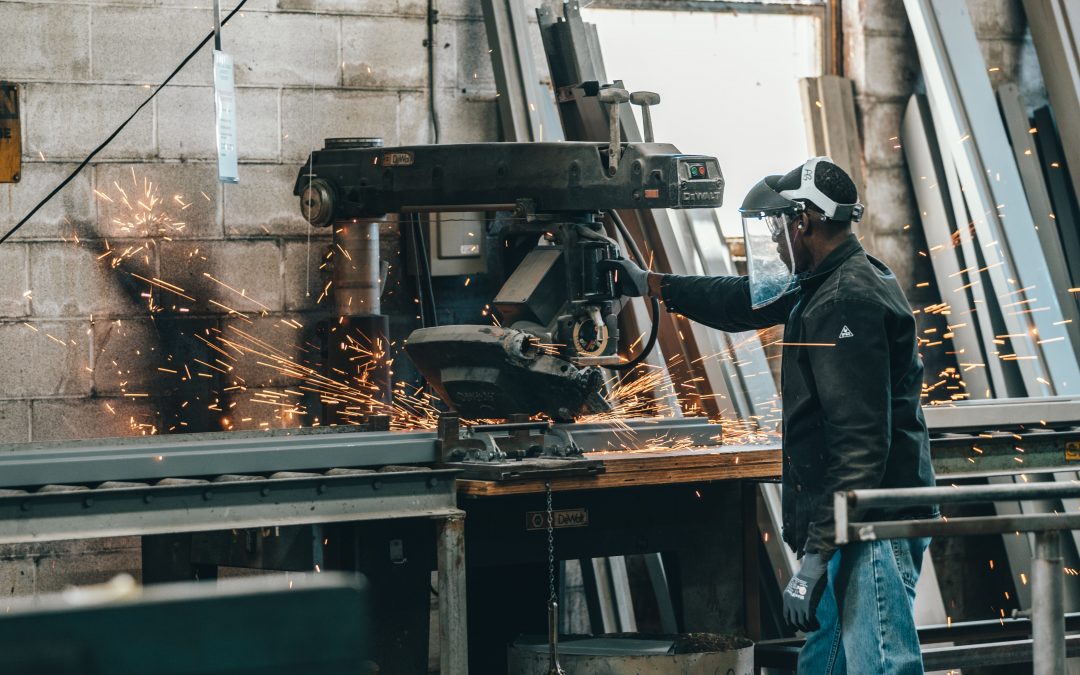Whether your employees work in front of a computer in an office, weld in a shop, or spend their days at a construction site, the health and wellness of their eyes may not be at the top of your list of safety concerns. Yet, an eye injury can be devastating to a worker who suffers permanent damage or blindness…and it may be costly for your business.
According to the U.S. Bureau of Labor Statistics (BLS), more than 35,000 eye injuries occur in the workplace every year. These injuries often require one or more missed days of work and are estimated to cost businesses $300 million in lost productivity, medical treatment and worker compensation.
Those are some serious numbers.
On-the-job eye injuries range from simple eye strain to severe trauma, often caused by flying objects, tools, particles in the air, chemicals or harmful radiation.
Fortunately, 90 percent of all workplace eye injuries can be avoided by taking proper precautions.
Injury Prevention Tips
Know the dangers – Start by doing an eye hazard assessment. Is there potential for flying debris? Are your workers exposed to strong chemicals? Do they work with sharp tools?
Eliminate hazards before starting work – Make sure supervisors and workers clear an area of as many potential dangers as possible before they begin to work. Use machine guarding, work screens and other protections.
Provide proper eye protection – Take note, a BLS survey of workers who suffered eye injuries revealed that nearly three out of five were not wearing eye protection at the time of the accident. The majority of these workers reported that they believed protection was not required for the situation.
Workers should wear safety eyewear whenever there is a chance of eye injury even when they are just passing through areas that may be hazardous. There is a broad range of options when it comes to safety eyewear, from safety glasses and goggles to face shields and full-face respirators.
The type of safety eye protection that is recommended depends on the hazards. If the worksite is an area where there may be particles in the air, flying objects or a lot of dust, safety glasses and side shields may suffice. In settings with chemicals, workers should at the very least be wearing goggles. If employees are welding, working with lasers or fiber optics, they probably need special-purpose safety glasses, goggles, face shields, or helmets designed for that task.
All protective eyewear should comply with Occupational Safety and Health Administration (OSHA) regulations for eye and face protection. Per OSHA standards, safety glasses must be permanently marked with the manufacturer’s marking, followed by a “+” sign, if the glasses are impact rated. No “+” indicates the glasses are not impact-rated. Also, look for the ANSI (American National Standards Institute) marking on safety glasses, which should read “ANSI Z87.1” or “ANSI 87.1+.” Many employers require that their mandatory protective eyewear meet the ANSI standard. OSHA also provides guidelines about the types of filter lenses required for specific welding and cutting activities
Encourage eye wellness – While not at high risk for trauma, employees who work on a computer most of the day should also be aware of their eye health. These employees can experience “computer vision syndrome,” which can make eyes feel irritated and fatigued. Adjustment of the computer monitor at a right angle away from any light source and the use of anti-glare screens can help. Employees should keep in mind the “20-20 Rule,” which states that every 20 minutes, an individual should look away from your computer, at an object about 20 feet away, and look at that object for about 20 minutes. Workers should also stay hydrated and use over-the-counter eye drops if experiencing dry eyes.
In the event of an eye injury, the workplace should have a sink area where workers can flush their eyes if exposed to chemicals, dust or flying debris.
When in doubt, treat all eye injuries as potential emergencies, and contact an eye doctor immediately.
For additional resources about on-the-job eye care, contact The Safety Specialists (TSS) at info@tss-safety.com.

